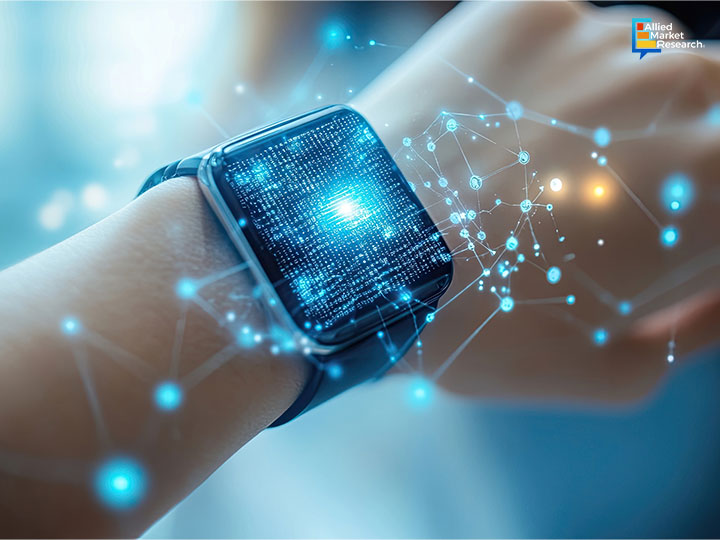Wearable Sensors Transforming Individual Health and Performance

1 Jul
2025
Highlights:
- Introduction
- Smart wearables for real-time health tracking
- Easy, accurate tools for better care and performance
Wearable sensors have quietly evolved from simple pedometers into powerful tools that capture vital data around the clock. In professional settings—from clinics to athletic training—these devices now support smarter decisions with minimal user effort.
From Basic Trackers to Advanced Health Tools
Wearable sensors started as step counters, but today they can monitor heart rate, oxygen levels, sleep, stress, and even temperature. Due to high-end improvements in sensor size, power efficiency, and software, these devices are becoming incredibly precise. Smart rings, for example, fit comfortably around the finger and provide ongoing health data without distractions. Whether for hospital staff tracking vital signs overnight or sports trainers checking recovery, these tools make regular check-ins easier and more accurate.
Smart Rings and Sensor-Embedded Clothing in Action
In India and other countries, smart rings and sensor-infused clothes are making waves. Rings made of titanium and coated with durable materials can last up to a week on one charge and can detect subtle signals like heart rate and skin temperature. Similarly, sensor-embedded shirts and fabrics add even more options. They can sense posture, monitor muscle strain, and record breathing rates in real time. Companies, this way, can deploy them for anything from elder care at home to real-time analysis in sports training centers—all without bulky gadgets or complicated setups.
Real-World Benefits for Healthcare and Sports
In medical environments, these sensors help staff monitor patients without waking them. Nurses and doctors receive data continuously and can make decisions faster when they spot troubling changes. Sports teams benefit as well. Trainers can easily track performance and fatigue to prevent injuries before they happen. Institutions can even improve documentation. One trial showed that wearable sensors increased compliance with repositioning protocols from under one-third to more than 80%—something that would have taken a lot of manual effort before. According to Allied Market Research, the wearable sensors industry contributed to $1.9 billion in 2024 and is expected to reach $13.2 billion by 2034, citing a CAGR of 21.4% during 2025-2034.
Latest Developments and Growing Adoption
Popular electronics brands are offering rings and clothes with more features like skin temperature sensing and blood oxygen tracking. Even better, prices are dropping, making these products accessible to clinics, gyms, and workplaces looking to scale up without overspending. Research groups are also using wearables to support learning by tracking focus and stress levels, helping improve surgical training and sports coaching methods.
Key Considerations for Business Users
Accuracy and design matter when choosing the right wearable for a team or facility. Rings need to fit snugly to pick up the most accurate data. Also, sensor-equipped shirts have to be durable enough to last through multiple washes and stretches without losing function. Nowadays, businesses are looking for easy integration into existing record-keeping or training platforms. At the same time, companies are preferring devices that respect data privacy and meet safety standards.
The Crux
Wearable sensors have moved far beyond simple fitness tracking. Smart rings and sensor-embedded clothes make it easier for businesses to monitor health, improve performance, and support their teams. They offer real-time data without disrupting daily routines and reduce the need for manual checks. With more affordable and accurate devices hitting the scene, they’re likely to play a big role in improving professional care and performance in the future.
Reach out to our team of experts to explore the changing dynamics of the wearable sensors industry.
✍ **𝑨𝒓𝒕𝒊𝒄𝒍𝒆 𝒘𝒓𝒊𝒕𝒆𝒓: Koyel Ghosh

Koyel Ghosh
Author’s Bio- Koyel Ghosh is a blogger with a strong passion and enjoys writing in miscellaneous domains, as she believes it lets her explore a wide variety of niches. She has an innate interest in creativity and enjoys experimenting with different writing styles. A writer who never stops imagining, she has been serving the corporate industry for the last five years.
Avenue: Entire Library membership of Allied Market Research Reports at your disposal
- Avenue is an innovative subscription-based online report database.
- Avail an online access to the entire library of syndicated reports on more than 2,000 niche industries and company profiles on more than 12,000 firms across 11 domains.
- A cost-effective model tailored for entrepreneurs, investors, and students & researchers at universities.
- Request customizations, suggest new reports, and avail analyst support as per your requirements.
- Get an access to the library of reports at any time from any device and anywhere.
Related Post
-
How are Submarine Cables Transforming Global Connectivity with Enhanced User Experience?
-
Endoscopy Procedures: Transformations in Techniques and Applications
-
AI-Powered Video Analytics: How the Product Actually Works for enterprises
-
Painting Robots: Transforming Precision Coating and Creative Applications
-
Innovations in Pharmacovigilance Systems Advancing Patient Safety
-
Understanding Edge Security: Keeping Data Safe Near the Source
-
Exploring the Use and Advancements of 3D Laser Scanners in Professional Applications
-
Reinforcing Industrial Controls with Smarter Tools and Training








